Are you actually absorbing your Zinc?
Jul 16, 2022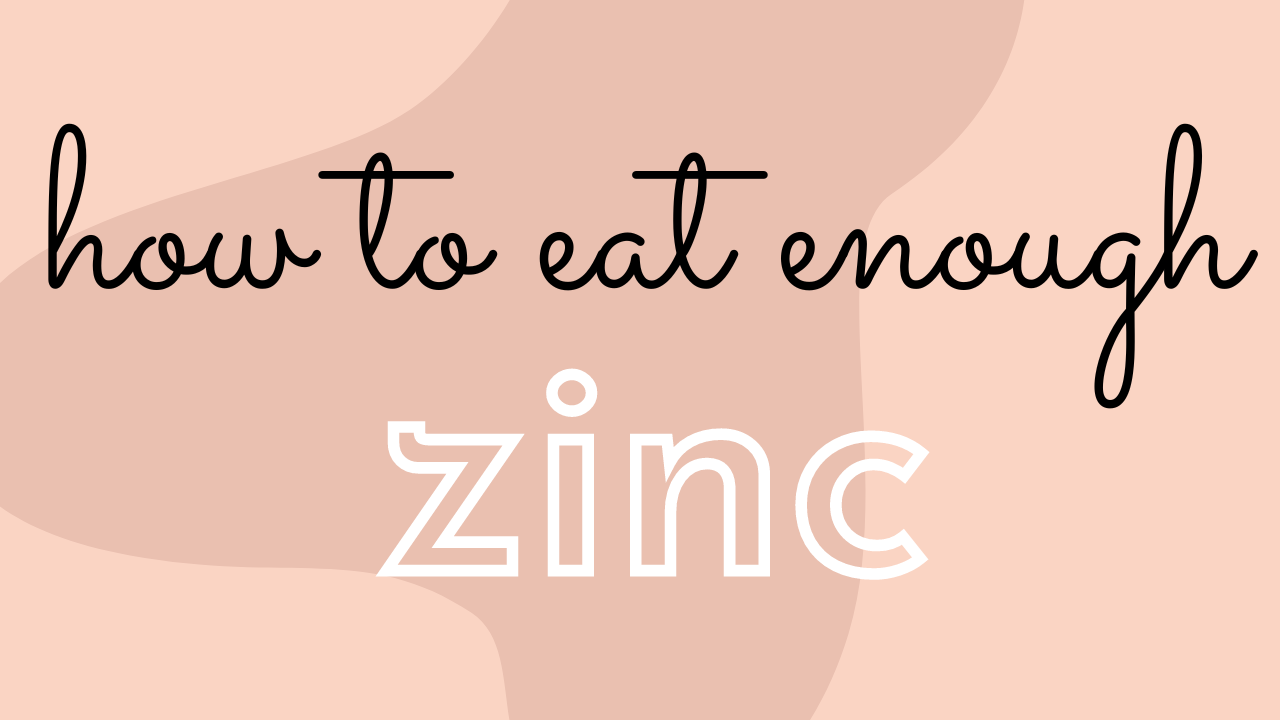
Eating plant based with a heavy reliance on whole grains, legumes, nuts & seeds can result in a zinc deficiency.
Did you know that zinc deficiency is prevalent worldwide? (ref,ref) In fact, the World Health Organization has designated zinc deficiency as a major disease contributing factor (ref)!
And sometimes, this deficiency isn’t due to a low dietary intake, but instead due to poor bio-availability due to excessive anti-nutrient consumption.
In this post, I will share my tips on making sure you are not only consuming enough dietary zinc, but absorbing and utilizing enough in order to thrive!
Let’s dive in!
- What is zinc?
- How much zinc do we need?
- What negatively impacts zinc absorption?
- Best zinc sources
- Examples of hitting enough daily zinc
- Those at risk of deficiency
First, what is zinc?
Zinc is an essential trace element that plays a key role in several important biological processes.
Zinc supports the functions of fat-soluble vitamins (ref, ref, ref, ref), reduces lipid peroxidation (ref) since it has antioxidant like functions (ref), regulates autophagy (ref), supports proper hormone production (ref), assists with skeletal muscle synthesis & recovery (ref), and so much more.
Zinc deficiencies can negatively impact skin health, gut health, growth & development, the CNS system, immune health, skeletal health, and reproductive systems (ref, ref).
How much zinc do we need?
Despite being one of the most abundant trace elements, zinc cannot be stored in significant amounts, so continuous dietary intake (ideally, daily) is required.
“The human body does not have a tissue reservoir for zinc, nor does it have a protein analogous to ferritin, which stores iron and releases it when needed... Therefore, an adequate dietary supply is required to prevent zinc deficiency.” (ref)
The RDA for zinc is 11 mg per day. Remember, the RDA was set on the basis of survival, not on the basis of optimizing health. So, we think this should be a minimum daily target.
However, more isn’t always better. So, it is best to get zinc from food in the whole food form, accompanied with other vitamins & minerals. Supplementation can be dangerous since zinc competes with copper absorption, so over consuming zinc can lead to a copper deficiency (ref).
Regular consumption of nutrient-rich animal products to reach 15-20 g of dietary zinc/day is going to be the best way to get your daily zinc needs in!
Being mindful of what negatively impacts zinc absorption is also important to ensure the zinc you consume is absorbed and utilized.
What negatively impacts zinc absorption?
When considering the best sources of zinc, it’s important to consider the bioavailability.

There is a difference between the nutrient content of food and how much of those nutrients are actually available for the body to use.
“The diet may not necessarily be low in zinc, but its bio-availability plays a major role in its absorption.” (ref)
Some plant-based foods may contain comparable levels of zinc relative to some animal foods, but their bioavailability is usually much less (ref, ref, ref).
1. Phytic Acid
Phytic acid (an anti-nutrient high in nuts, seeds, beans & grains) is the principal dietary factor known to limit zinc bioavailability by strongly binding zinc in the gastrointestinal tract. (ref)
“Diets based on cereals and legumes and poor in animal products make it difficult to meet the zinc requirements because their high phytate content reduces the bioavailability of zinc.” (ref)
“The mineral content of legumes is generally high, but the bioavailability is poor due to the presence of phytate, which is a main inhibitor of [zinc] absorption.“ (ref)
One study demonstrated that beef protein increases zinc absorption relative to soy protein (high in phytic acid) (ref).
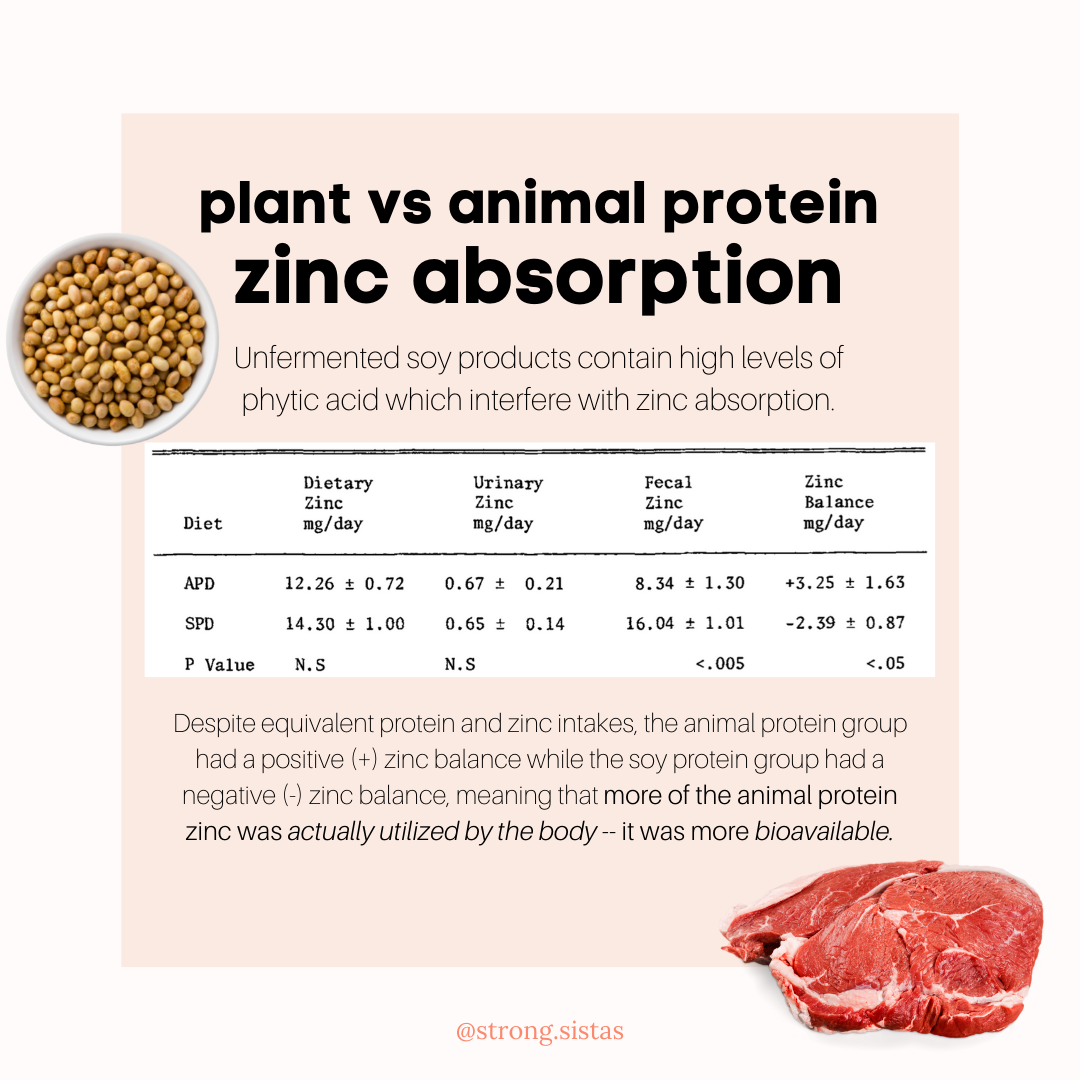

We are not saying you shouldn’t consume grains, but these grains should be prepared properly (for ex: sourdough fermentation for grains, nixtamalization for corn flour, etc.) to reduce phytic acid levels.
2. Iron supplementation
Iron supplementation has been shown to impair zinc absorption (ref, ref, ref). You should not be supplementing with iron pills – just regularly consume meat and you will get all the iron you need. The more is not merrier (stay tuned on a future blog post on iron overload).
3. Meals low in animal protein
Zinc absorption has been shown to increase when a meal contains animal protein (ref, ref, ref). Thus, the consumption of animal proteins improves the bioavailability of zinc contained in plant food sources (ref, ref).
One study (ref) compared the zinc absorption of three meals, varying in zinc and protein content.
- Bean meal with the lowest protein content: 5.9 umol of zinc absorbed
- Addition of chicken doubled the protein content and increased the zinc absorption to 10.3 umol
- Addition of beef (a high zinc source) also doubled the protein content and increased the zinc absorption to 15.9 umol
The authors concluded that the addition of animal protein to meals can significantly improve the value of plant zinc sources. Just another reason to consume balanced meals with animal protein (which we discuss in depth in our course).
There is a myth that calcium negatively impacts zinc absorption. But this is not true – calcium does not have a negative effect on zinc absorption (ref, ref). In fact, milk and cheese are bioavailable zinc sources (ref).
Best zinc sources
Due to low anti-nutrient levels, animal products are going to be the best zinc sources:
Per 100 g cooked:
- Shellfish
- Oysters = 33.2 mg
- Crab = 5.5 mg
- Lobster = 4.1 mg
- Octopus = 3.4 mg
- Mussels = 2.7 mg
- Red meat = 4.5-9 mg
- Chicken hearts = 7.3 mg
- Pork = 2.3 mg
Per serving size:
- 2 eggs = 1.3 mg
- 2 cups milk = 2 mg
- 1 oz serving cheese = 1.1 mg
Data from the US food database (ref).
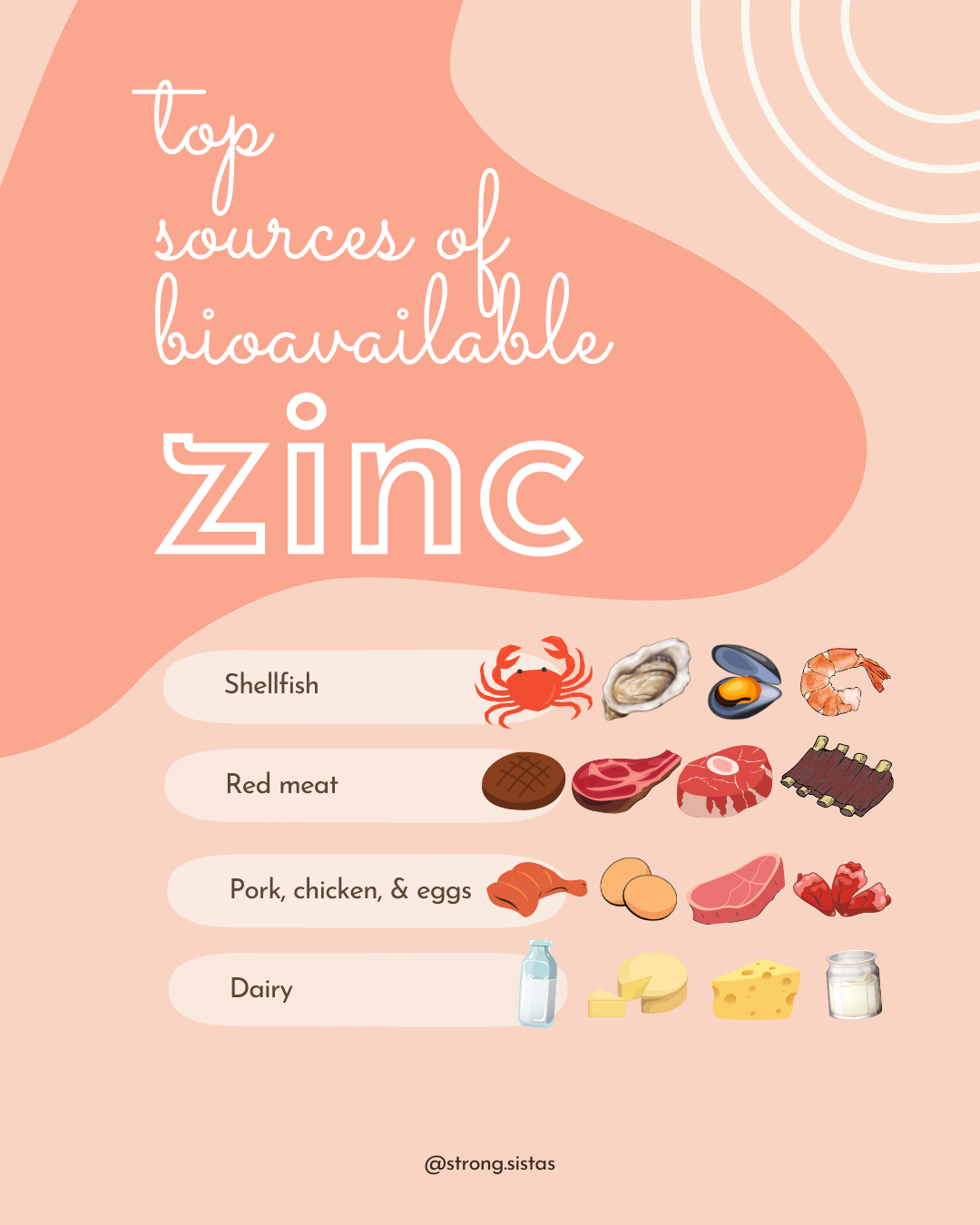
As a note, reduced fat and whole milk will contain the same amount of zinc. The zinc is not in the fat portion of the milk, as non fat and whole milk contain the same amount of zinc (ref, ref).
Seeds (like pumpkin seeds) are also high in zinc. However, seeds not only contain high levels of phytic acid (which we learned, negatively impacts zinc absorption), but they are also high in PUFAs which can downregulate your metabolism when consumed in excess (discussed more in our course). A 1 oz serving of pumpkin seeds will provide about 2.2 mg zinc, but also 5.56 g PUFA (38% of which is linoleic acid) (ref).
Animal products are quite simply superior when it comes to obtaining nutrients due to their higher bioavailability!
What to do?
What you eat high zinc sources with matters.
“Zinc absorption does not only depend on an adequate dietary intake, but is also greatly affected by its intestinal availability from the diet.” (ref)
As discussed, phytate is the main nutritional inhibitor of zinc absorption.
So, it is best to consume high zinc sources away from high phytate foods (like grains). For example, eat oysters with fruits, white rice, or potatoes. Not necessarily masa tortillas or sourdough bread for maximal zinc absorption.
It’s important to remember that the phytate meal to meal, not relevant for the whole day. Meaning grains you may consume at one meal, will not affect zinc absorption at the next meal.
But the most important thing is regularly consuming nutrient-rich animal products.
Check out some examples below of hitting adequate levels of zinc (15-18 mg). You would obviously eat more food on top of these, but the inclusion of these nutrient-rich products daily will allow you to maintain optimal zinc status.
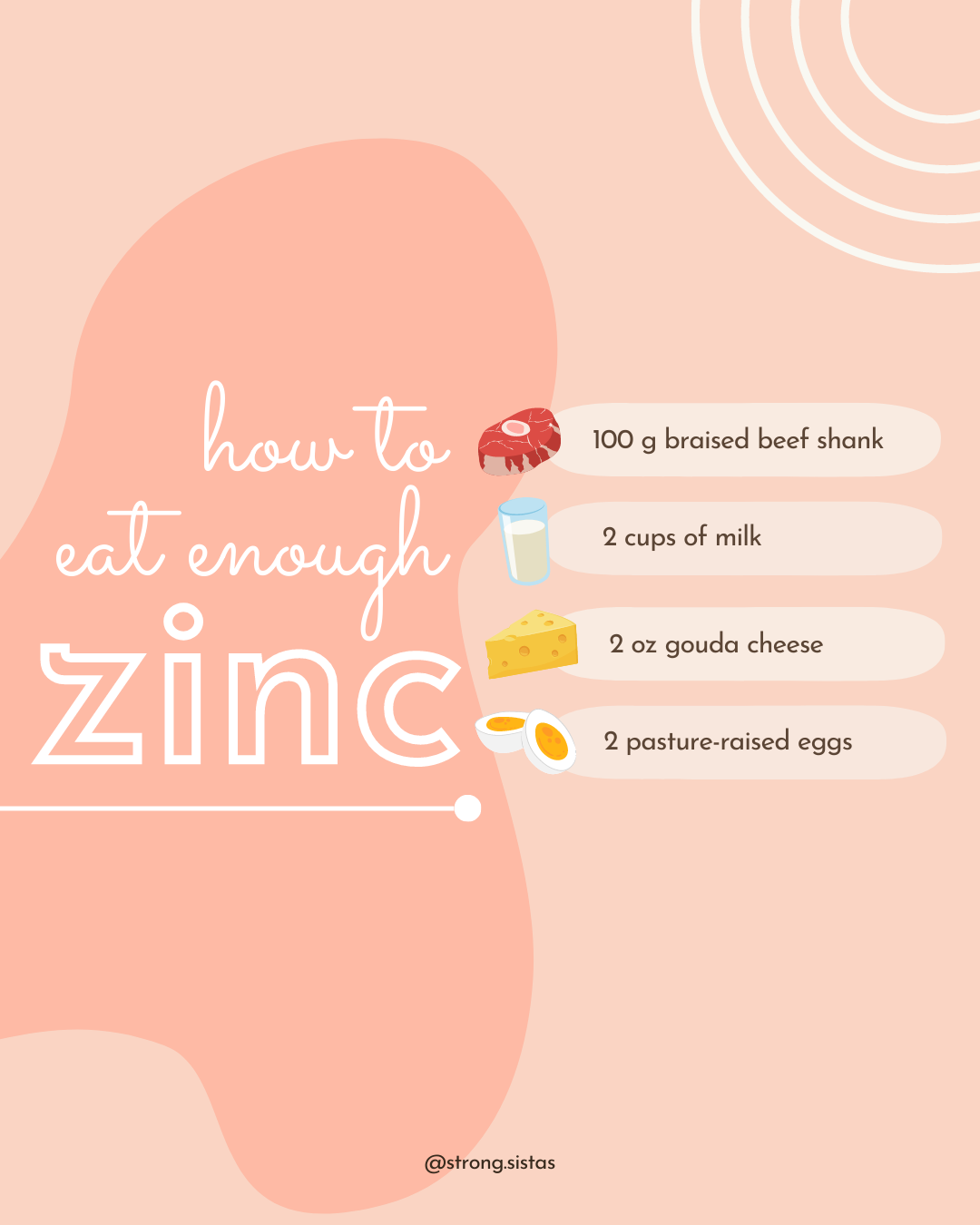
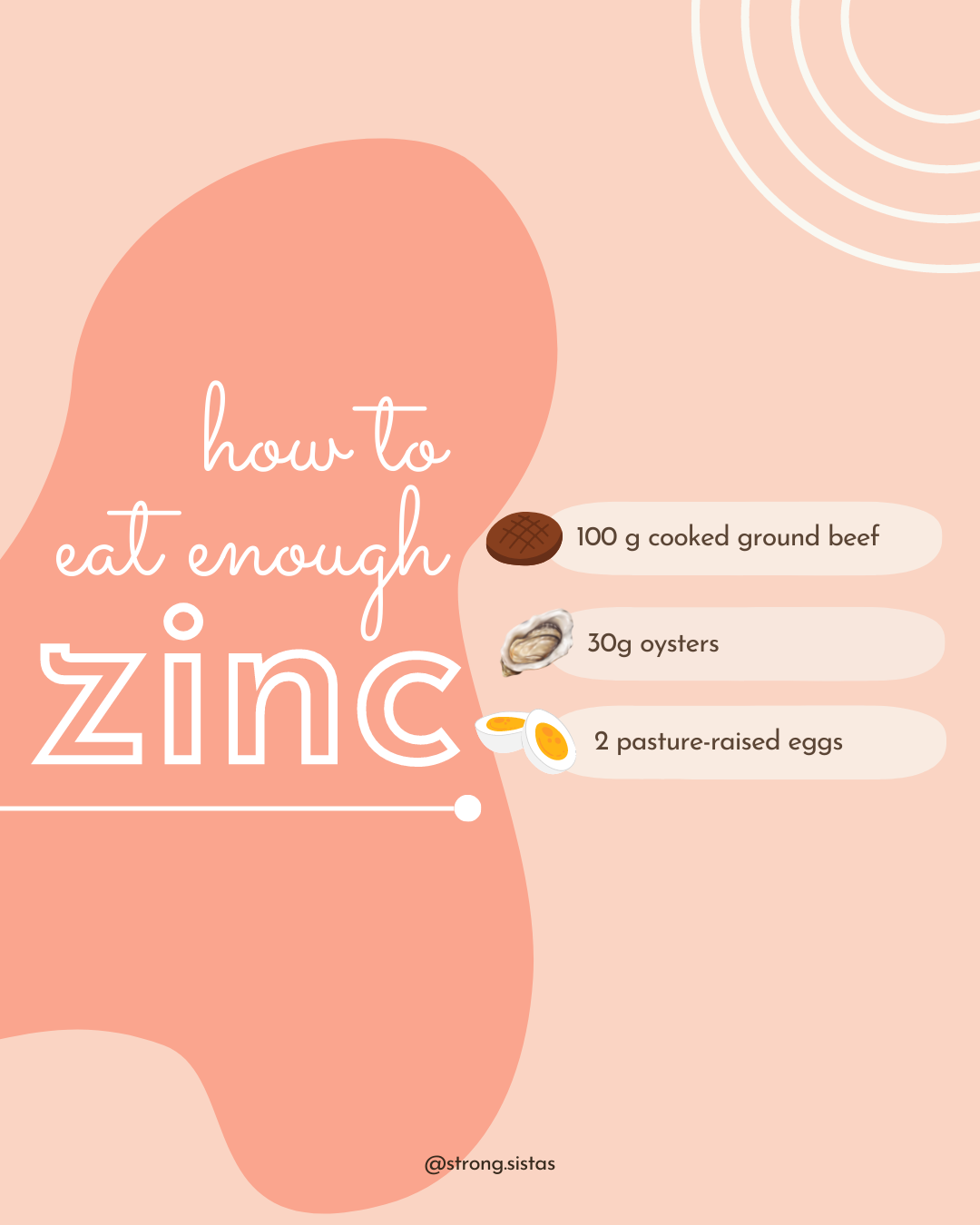
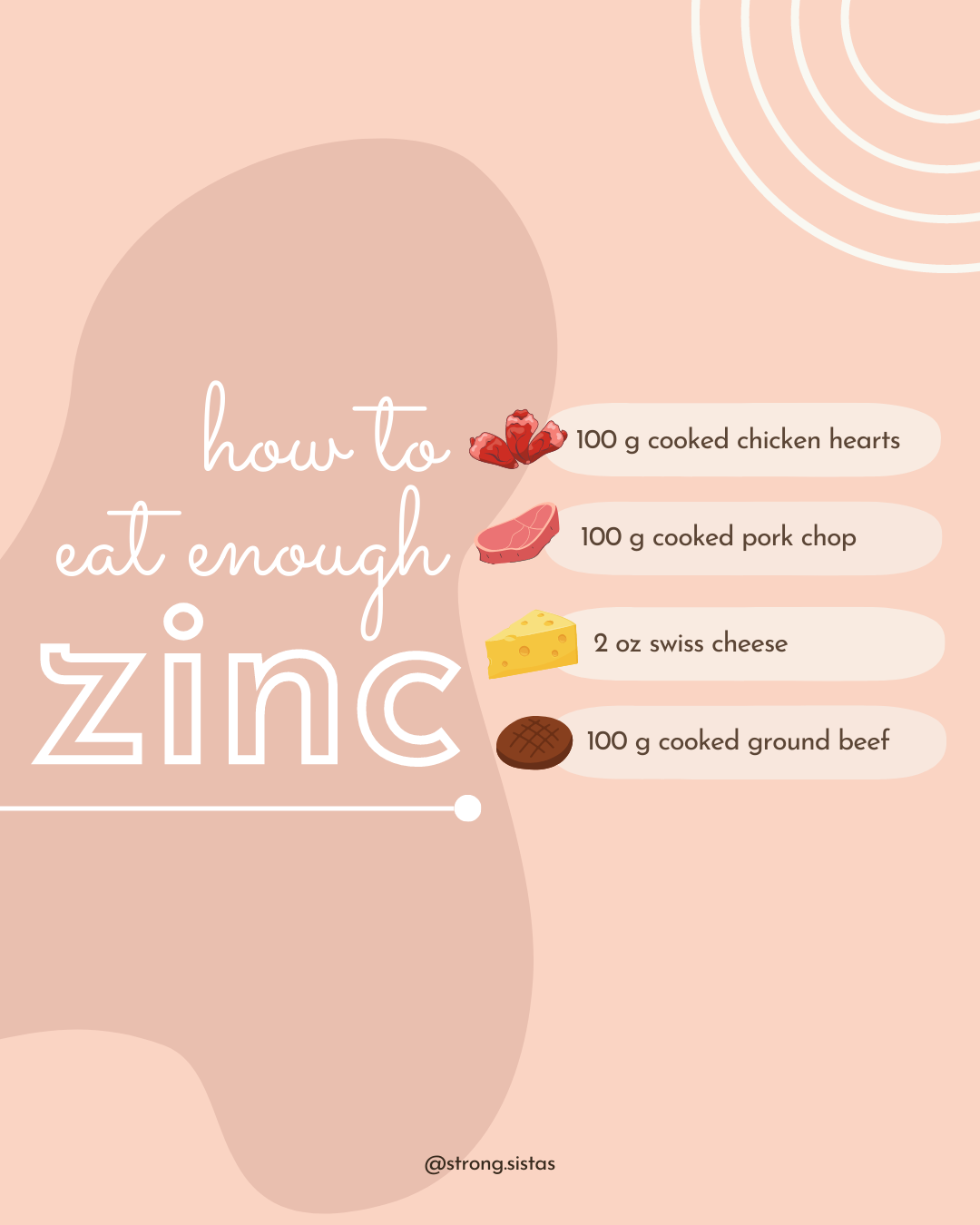
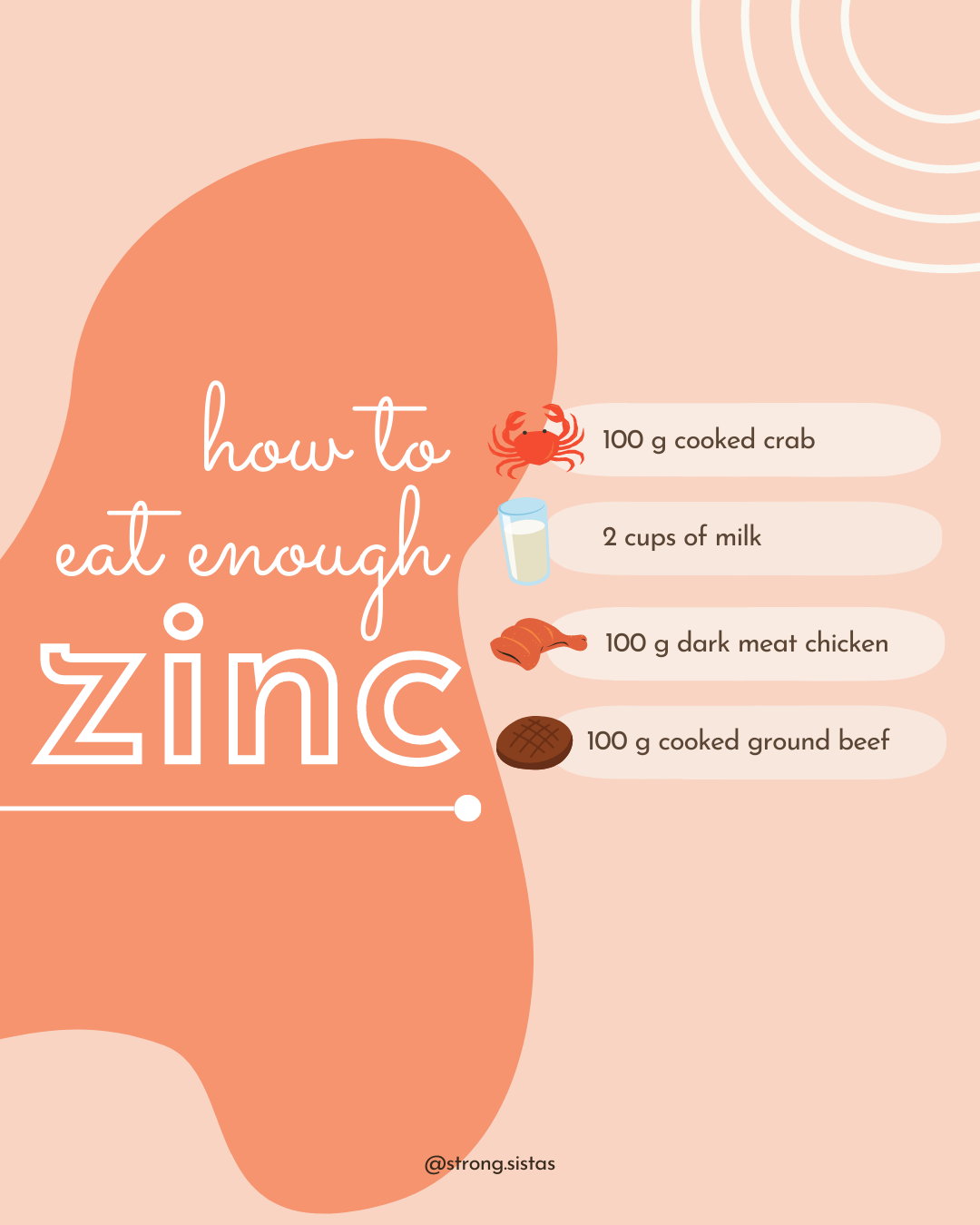
Those at risk of deficiency
While zinc deficiency is prevalent worldwide, it is more prevalent in areas of high cereal and low animal food consumption (ref).
“Diets based on cereals and legumes and poor in animal products make it difficult to meet the zinc requirements because their high phytate content reduces the bioavailability of zinc.“ (ref)
In fact, some research shows that plant-based diets are likely to be insufficient to meet zinc needs of young children (ref) and “efforts that increase red meat or liver consumption by infants and young children can have a positive impact” (ref).
The elderly is also at risk since zinc absorption decreases with age (ref) (on top of inadequate dietary intake for elderly persons (ref)).
Zinc deficiency is also higher for children and pregnant woman since zinc requirements are elevated during times of rapid growth like pregnancy, infancy & puberty (ref). A zinc deficiency during these times will hinder growth and development.
In Summary:
Excessive consumption of phytic-acid rich foods (common in a grain-heavy plant-based diet) without adequate consumption of animal products can lead to severe nutrient deficiencies such as zinc.
Interested in more science-based nutrition information? Check out our newly released course, Rooted in Resilience. We include over 80 meal plan options that hit ideal micronutrient targets (such as zinc) to avoid any potential nutrient deficiencies. We also include a ton of information on how to properly prepare food (like grains) to reduce the phytic acid content.


